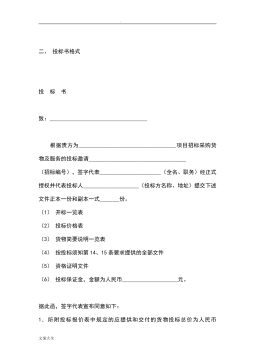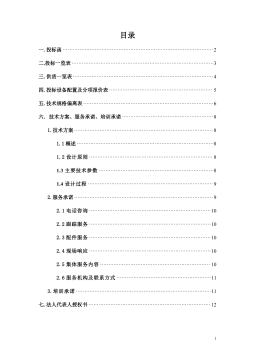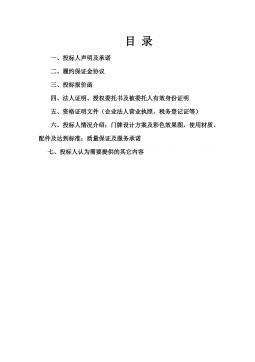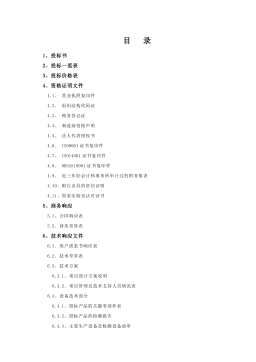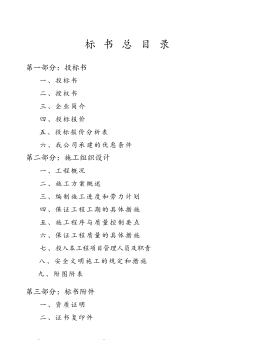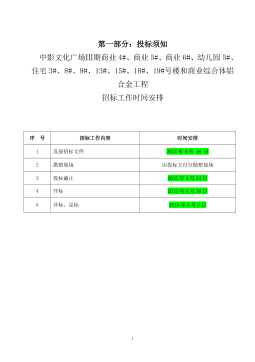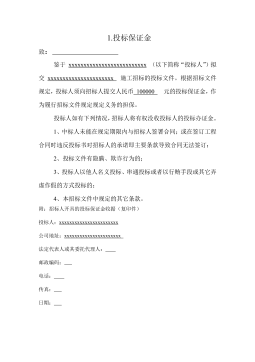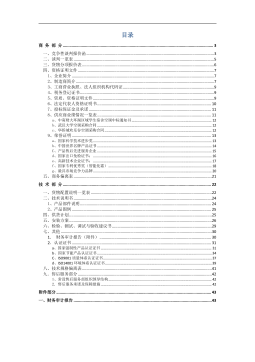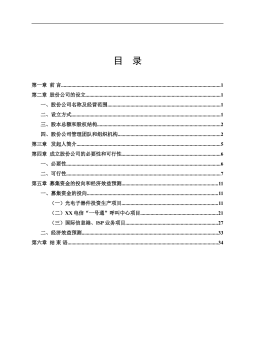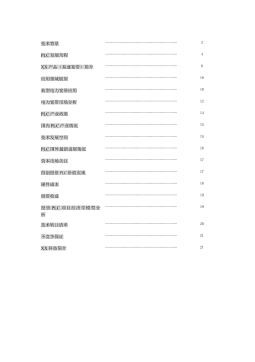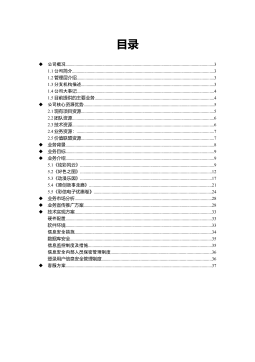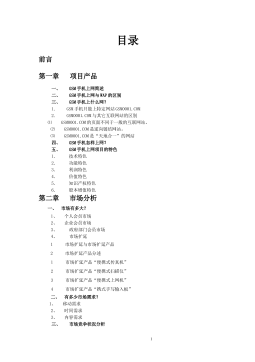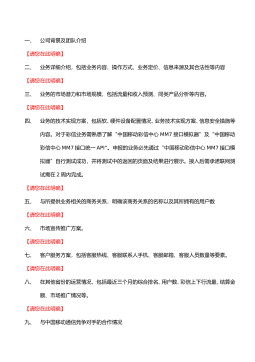上海典型绿色办公建筑能耗及节能措施敏感度研究
VIP免费
上海典型绿色办公建筑能耗及节
能措施敏感度研究
摘 要
2006 年,我国颁布了自己的《绿色建筑评价标准》GB/T50378-2006,全国各
地根据该标准将绿色建筑的理念付诸于工程实践当中。从 2008 年到现在,全国已
经评出 353 项具有绿色标识的建筑,另外还有部分建筑是参评过美国的 LEED 认
证,据统计,我国目前是世界上除美国以外 LEED 认证项目最多的国家。北上广
绿色建筑发展最快,其中,上海绿色办公建筑的数量从 2008 年的 7个,增长到
2012 年的 154 个。我国各地绿色建筑发展如此之快,更是受到社会各界的关注,
同时也受到社会的质疑,绿色建筑到底是不是更节能。在这同时,关于绿色建筑
的数据几乎为零,为了得到绿色建筑是否更节能,本文主要针对部分上海绿色办
公建筑进行调研。通过对调研结果的整理统计分析,与以往一般办公建筑能耗对
比,得出绿色办公建筑确实更节能。其主要原因是绿色建筑采用了一些节能措施
为了更进一步了解绿色建筑所采用的节能措施对建筑的影响程度,从调研建筑中
选取典型绿色建筑进行节能措施敏感度的研究。
在对上海办公建筑进行调研时,其调研内容主要包括建筑的基本信息、空调
系统形式、冷热源性能参数和配备、以及能耗情况,并从调研建筑中选取典型建
筑建立模型,进行节能措施敏感度研究。其中,进行敏感度研究所需的节能措施
是从我国《绿色建筑评价标准》中选取的。在评价体系中涉及到节能措施很多,
我们只从中选取其中的 4个节能措施进行敏感度研究。4个节能措施分别是:围
护结构(包括外墙、外窗、屋面)传热系数或遮阳系数、室内照明系统的照明密
度、冷热源性能参数和地源热泵系统。
在进行敏感度研究之前,首先要确定模拟方法的可靠性,以及模型的准确性,
针对这两点本论文在第三章中进行了模拟方法确定,第四章中对典型绿色办公建
筑进行了模型校正。模拟方法是模拟一个简单的建筑模型,来说明在不满足小时
数在满足小于 300 小时计算出来的能耗更合理,当不满足小时数越大时,能耗可
以算到很小,在不满足小时数为 824h 时,能耗强度只有 24.38kgce/m2·a,在这种
情况下室内环境温度是达不到设计要求的。模型校正是将建筑的实际能耗情况和
模拟计算能耗进行对比,包括逐月能耗、全年能耗以及建筑各部分能耗,逐月能
耗对比中,最大误差为 8.4%,最小为 1.7%,这样可以说明模型是准确的。
调研结果显示,绿色办公建筑比一般非绿色办公建筑更节能,绿色建筑平均
能耗强度为 30.47kgce/m2•a ,而一般非绿色办公建筑平均能耗强度为
35.43kgce/m2•a,节能率为 14%。另外,通过对选出的节能措施进行敏感度分析研
究可以得到,对建筑能耗影响程度较大的是照明密度和冷源性能参数,屋面传热
系数对能耗影响很小,可以忽略不计,只针对类型与本论文中模型相似的建筑;
正交试验中第 30 组试验得到的建筑能耗最小,为 30.9kgce/(m2·a),节能率为
14.6%。对地源热泵系统的研究可以发现,同一栋建筑使用地源热泵系统的比例
越大,能耗强度越小,越节能,全部使用地源热泵系统时比使用常规冷热源节能
13.4%。
根据统计学中最小样本量的公式计算得出,调研的最小样本量为 31,本论文
中调研办公建筑数量只有 8栋,不能够代表整个上海绿色办公建筑的能耗情况,
但是关于绿色办公建筑的数据缺乏,这 8栋绿色建筑的数据也是具有研究意义的。
如果使数据更具有代表性,我们还需要对更多的绿色办公建筑进行调研。同时,
绿色建筑是以增加成本为前提的,在研究节能措施敏感度的时候并没有考虑建筑
成本和回收期的问题,在接下来的工作中我们应该把这些问题考虑进去,再进行
节能措施敏感度的研究。另外,我国绿色建筑评价体系中涉及很多种节能措施,
本论文中,只是从中选取了 4项节能措施进行节能措施感度研究,接下来可以对
其他节能措施进行敏感度的研究。
关键词:典型绿色办公建筑 调研 能耗模拟 节能措施 敏感度 节能率
ABSTRACT
In 2006, China promulgated the "Green Building Valuating Standard" GB/T50378-
2006, in accordance with the standard, the idea of green building put into engineering
practice all over the country. From 2008 to the present, the country has named 353
Green Building, in addition, part buildings have the LEED certification. According to
statistics, China is the country which has the most LEED certification projects except
America. The development of Green Building is so fastest in Shanghai, Beijing, and
Guangzhou, and in Shanghai, the quantity is 7 in 2008, and then, the quantity is 154 in
2012. Green Building is concerned by the community, and at the same time, it has also
been questioned, green building is not more energy efficient. At the same time, the data
on Green Building is mostly zero, to get the result that Green building is not more
energy efficient, we researched the office building in Shanghai. Through the statistical
analysis of survey results, compared with previous general office building energy
consumption, we get Green office Building is indeed more energy efficient. The main
reason is the use of many energy-saving measures in Green Building, in order to further
understand the influence of the measures adopted by Green Building, selecting typical
Green Building from the research buildings and research sensitivity of energy-saving
measures
When researching the office building, the research content contains the basic
information, air conditioning system form, performance parameters of hot and cold
sources, as well as energy consumption, and selecting typical building from the research
buildings and modeling for energy saving measures sensitivity studies. The measures
for sensitivity studied of energy-saving are selected from China "Green Building
Valuating Standards". In the evaluation system involves a lot of energy measures, we
only select from four energy-saving measures for sensitivity studies. The four energy-
saving measures are: building envelope (including the external walls, windows, roof )
heat transfer coefficient or shading coefficient, indoor lighting systems lighting density,
cold and heat source performance parameters, and ground source heat pump system.
Before sensitivity study, we must first determine the reliability of the simulation
method, and the accuracy of the model. For the two points, in the third Chapter, the
simulation method would be determined, and in the fourth chapter, the typical green
office building model would be corrected, in the paper. The simulation method is to
simulate a simple building model, and it can explain the calculated energy consumption
is more reasonable under the hours that not met the occupied hours is less than 300
hours. When the number of not met occupied hour is bigger, the energy consumption
can be considered to very small, when does not meet the number of hours is 824h, the
energy intensity only is 24.38kgce/m2 • a, in which case the ambient room temperature
is less than the design requirements. Model calibration is that the building actual energy
consumption and energy consumption simulation were compared, including the monthly
energy consumption, annual energy consumption and the construction of each part of
the energy consumption, in the monthly energy consumption comparison, the maximum
error is 8.4%, and the smallest is 1.7%, so we can think the model is accurate.
Research results show that Green office Building is more energy efficient than the
non-green office building, the average energy consumption intensity of Green building
is 30.47kgce/m2•a, and the average energy consumption intensity of general non-green
office building is 35.43kgce/m2•a, and the energy-saving ratio is 14%. In addition, the
energy-saving measures for sensitivity studies are selected from China "green building
evaluation standards". In the evaluation system, it involves many of energy-saving
measures, we only select four kind energy-saving measures for sensitivity studies. Four
energy-saving measures are: building envelope (including exterior walls, exterior
windows and roof) heat transfer coefficient or shading coefficient, indoor lighting
systems lighting density, cold and heat sources performance parameters, and also
includes ground source heat pump system.
Through the sensitivity analysis of the selected energy-saving measures, we can
find that the greater influences which effect on the energy consumption of building
energy consumption are lighting density and cold source performance parameters, roof
heat transfer coefficient is negligible, and only for the buildings which type is similar
with the paper model building; in the orthogonal test, the 30th test building energy
consumption is minimum, which is 30.9kgce / (m2 • a), the energy-saving ratio is
14.6%; in the research of Ground source heat pump system, it can be found that the
energy consumption with ground source heat pump system is less 13.4% than using
conventional heat source energy in the same building, and geothermal side energy
consumption is greater 2% than the total energy consumption, is 7.8%.
In this paper, the number of office buildings researched is a limited, it can represent
the energy consumption of part Green office building in Shanghai, in order to make
these data more representative, we also need research more green office building. The
same time, Green building is increasing the cost as the prerequisite, in the study of the
sensitivity of energy-saving measures, it did not consider the problem of the
construction costs and payback periods. In the next work, we should put these issues
into account, and then research the sensitivity of energy-saving measures. In addition,
China Green Building Rating System involves a variety of energy-saving measures, in
this paper, we only select four kind energy-saving measures for the study of energy-
saving measures sensitivity, followed by other energy-saving measures.
Key Word: typical green office building, research, energy consumption
simulation, energy-saving measures, sensitivity, energy-saving
ratio
目录
中文摘要
ABSTRACT
第一章 绪论.....................................................................................................................1
1.1 课题背景.................................................................................................................1
1.1.1 上海办公建筑发展趋势..................................................................................1
1.1.2 绿色建筑发展情况..........................................................................................2
1.2 与研究内容相关的研究现状.................................................................................3
1.2.1 国外调研工作及能耗影响因素发展现状......................................................3
1.2.2 国内调研工作及能耗影响因素发展现状......................................................5
1.3 课题的提出及意义.................................................................................................7
1.3.1 课题的提出......................................................................................................7
1.3.2 课题实施方案..................................................................................................7
1.3.3 主要研究内容..................................................................................................9
1.3.4 课题的意义......................................................................................................9
1.4 本章小结...............................................................................................................10
第二章 上海办公建筑的能耗调研................................................................................11
2.1 上海办公建筑的调研...........................................................................................11
2.1.1 调研方法的介绍............................................................................................11
2.1.2 调研方法的选择............................................................................................12
2.1.3 调研对象的选择............................................................................................13
2.1.4 调研内容........................................................................................................13
2.1.5 调研过程中存在的问题................................................................................16
2.2 调研结果统计.......................................................................................................16
2.2.1 建筑的基本信息............................................................................................19
2.2.2 建筑的围护结构及室内热源........................................................................20
2.2.3 空调系统形式................................................................................................22
2.2.4 使用时间........................................................................................................23
2.2.5 冷热源及其配置情况....................................................................................23
2.2.5.1 冷热源形式统计.....................................................................................24
2.2.5.2 冷热源组合形式统计.............................................................................26
2.2.5.3 冷热源配置.............................................................................................27
2.2.6 能耗情况........................................................................................................27
2.3 本章小结...............................................................................................................30
第三章 软件介绍及模拟方法的确定............................................................................32
3.1 软件的介绍...........................................................................................................32
3.1.1 建模软件的简单介绍....................................................................................32
3.1.2 模拟软件的介绍............................................................................................33
3.2 能耗模拟的意义...................................................................................................35
3.2.1 能耗模拟对既有建筑的意义........................................................................35
3.2.2 能耗模拟对新建建筑的意义........................................................................35
3.3 模拟原则及模拟方法的确定...............................................................................36
3.3.1 模拟原则........................................................................................................36
3.3.2 模拟方法的确定............................................................................................39
3.3.2.1 建筑模型及空调系统的介绍.................................................................39
3.3.2.2 模拟输入条件.........................................................................................40
3.3.2.3 模拟结果整理.........................................................................................41
3.4 本章小结...............................................................................................................42
第四章 典型绿色办公建筑的选取及模型建立............................................................43
4.1 典型绿色办公建筑的选取...................................................................................43
4.1.1 典型绿色建筑的概况....................................................................................43
4.1.2 典型绿色办公建筑的空调系统形式............................................................43
4.1.3 典型绿色办公建筑的使用情况....................................................................44
4.1.4 典型绿色办公建筑的冷热源形式................................................................44
4.1.5 典型绿色建筑的实际能耗情况....................................................................45
4.2 典型绿色办公建筑模型的建立...........................................................................48
4.3 典型绿色办公建筑模型的校正...........................................................................51
4.4 本章小结...............................................................................................................53
第五章 节能措施选取及其敏感度研究........................................................................55
5.1 节能措施的选取...................................................................................................55
5.1.1 绿色建筑评价标准的介绍............................................................................55
5.1.2 绿色建筑中节能措施的选取........................................................................57
5.2 节能措施敏感度研究...........................................................................................58
5.2.1 围护结构传热系数的敏感度研究................................................................59
5.2.1.1 外墙传热系数敏感度研究.....................................................................60
5.2.1.2 屋面传热系数敏感度研究.....................................................................62
5.2.1.3 外窗传热系数敏感度研究.....................................................................63
5.2.1.4 遮阳系数敏感度研究.............................................................................65
5.2.2 冷热源敏感度研究........................................................................................66
5.2.2.1 冷源性能参数敏感度研究.....................................................................66
5.2.2.2 热源性能参数敏感度研究.....................................................................67
5.2.3 照明系统敏感度研究....................................................................................68
5.2.4 地源热泵系统敏感度研究............................................................................70
5.3 用正交试验法进行敏感度研究...........................................................................72
5.3.1 确定指标........................................................................................................72
5.3.2 制定因素水平表............................................................................................72
5.3.3 选择正交表....................................................................................................73
5.3.4 结果分析........................................................................................................78
摘要:
展开>>
收起<<
上海典型绿色办公建筑能耗及节能措施敏感度研究摘要2006年,我国颁布了自己的《绿色建筑评价标准》GB/T50378-2006,全国各地根据该标准将绿色建筑的理念付诸于工程实践当中。从2008年到现在,全国已经评出353项具有绿色标识的建筑,另外还有部分建筑是参评过美国的LEED认证,据统计,我国目前是世界上除美国以外LEED认证项目最多的国家。北上广绿色建筑发展最快,其中,上海绿色办公建筑的数量从2008年的7个,增长到2012年的154个。我国各地绿色建筑发展如此之快,更是受到社会各界的关注,同时也受到社会的质疑,绿色建筑到底是不是更节能。在这同时,关于绿色建筑的数据几乎为零,为了得到绿色建...
作者:牛悦
分类:高等教育资料
价格:15积分
属性:81 页
大小:3.14MB
格式:DOC
时间:2024-11-11


